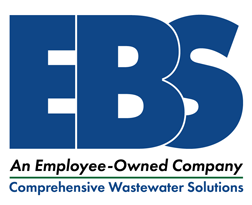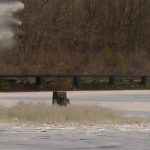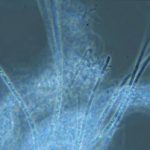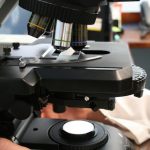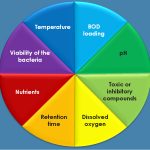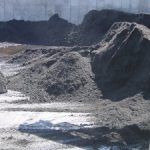A Focus on Aerobic Treatment in Aerated Stabilization Basins (ASBs)
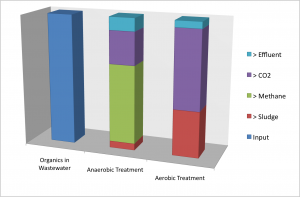 There are 2 major types of systems used for wastewater treatment: aerobic and anaerobic systems. Each has different uses along with pros and cons. This particular article focuses on aerobic treatment. Anaerobic treatment is the focus of a companion article written by EBS.
There are 2 major types of systems used for wastewater treatment: aerobic and anaerobic systems. Each has different uses along with pros and cons. This particular article focuses on aerobic treatment. Anaerobic treatment is the focus of a companion article written by EBS.
Aerobic Treatment
Aerobic wastewater treatment is a process where bacteria utilize oxygen to degrade organic matter (generally quantified as biochemical oxygen demand or BOD) and other pollutants involved in various production systems. The two most common types of aerated wastewater systems are activated sludge systems and aerated stabilization basins (ASBs). ASBs are commonly found as treatment systems in the pulp and paper industry and are used in some municipalities, as well as other industries.
There are eight growth pressures that affect a treatment system but we will review two major ones: oxygen and organic loading (BOD). In a typical wastewater treatment system, the influent coming into the system has the most BOD because it hasn’t yet been treated. As the influent reaches the ASB, it enters an aerated environment where the degradation will begin. Different types of aeration are used in ASBs but the most widely used are either surface aerators or diffused aeration systems. When using surface aeration, multiple units are needed to be properly spaced to treat the water. Diffused aeration is normally air that is supplied by compressors or blowers and piped under the surface where the air is released evenly throughout the ASB. Occasionally, pure oxygen is utilized in wastewater treatment, but this is relatively uncommon in ASBs.
The degradation of BOD is achieved through aerobic bacteria in a system. The bacteria utilize oxygen as an electron receptor in order to convert the organic material (BOD or oxygen demand) to carbon dioxide. Via this process, they multiply, which in turn creates more bugs to break down more BOD. As the water flows through the system, many changes will occur. As the amount of BOD in the system reduces, the total number of bacteria will also decrease. The oxygen demand, as measured by oxygen uptake rate (OUR) will decrease and the environment will become acceptable for more advanced life forms, such as protozoa or metazoan. A few of the common higher life forms are flagellates, free-swimming ciliates, stalked ciliates, and rotifers. The higher life forms will feed on the dispersed bacteria and flocculated bacteria that have been formed after degradation has occurred. Higher life forms are an indication that most BOD has been removed from the system.
ASBs tend to be very resilient systems and generally produce adequate quality effluent for typical discharge requirements. However, proper aerator placement and routine maintenance are critical to ensuring that system performance does not deteriorate over time.
Whether it is aerobic or anaerobic treatment, each treatment system has its place in the world today. They are very different in the process but both are used to achieve maximum degradation, while meeting the strict regulations set by the environmental agencies that regulate what is released into the air, ground, or water.
